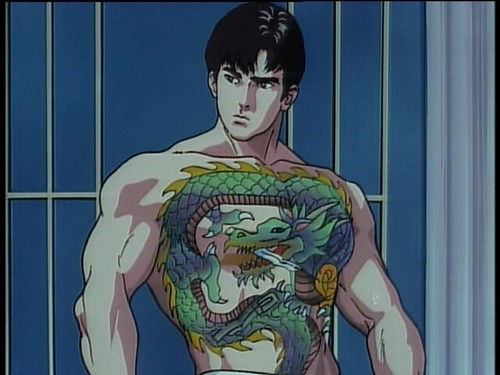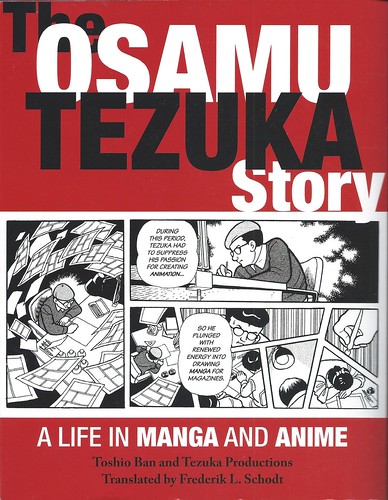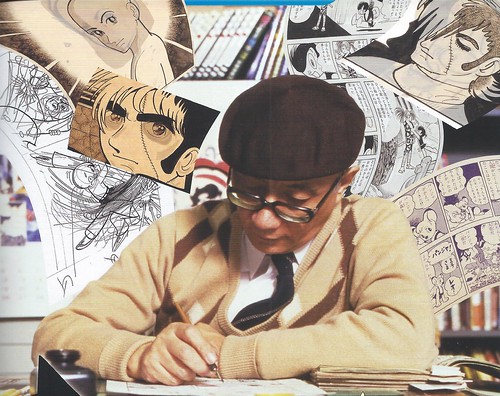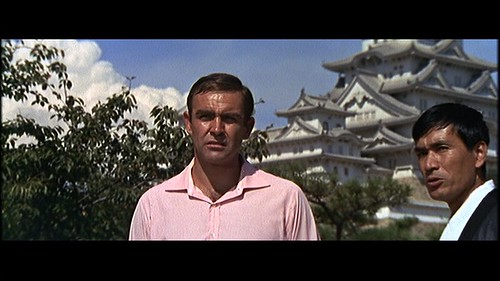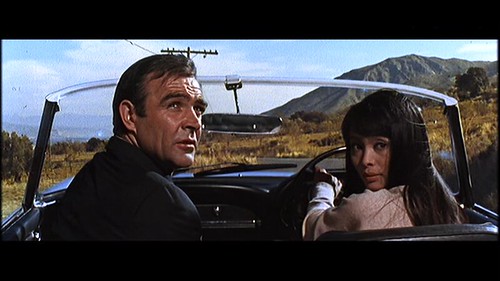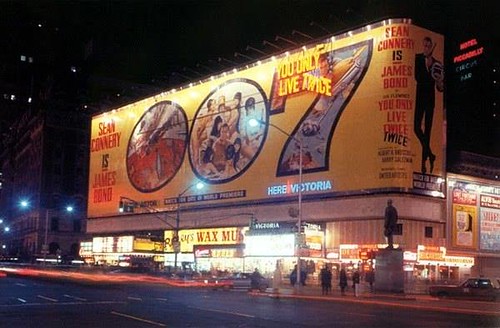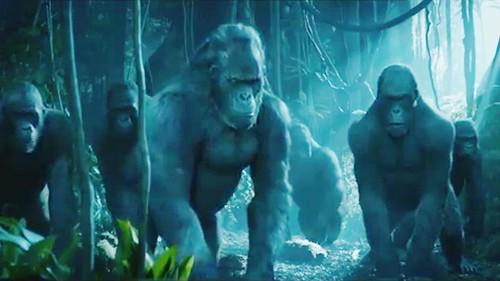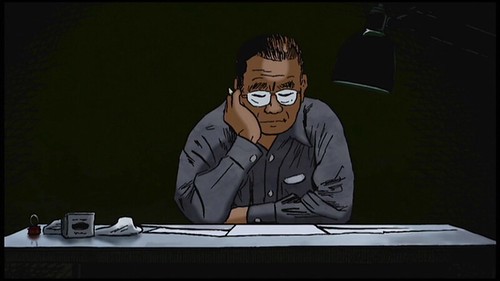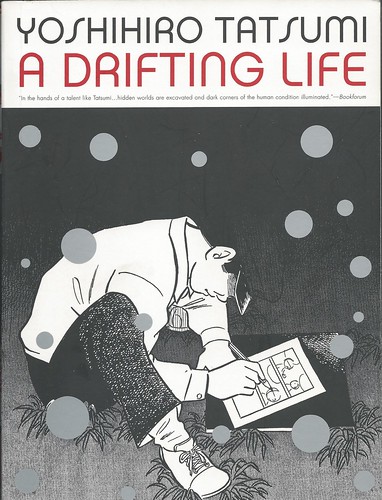For the record, CAPE FEAR (1962) is a black-and-white thriller directed by J. Lee Thompson and based on a novel by John D. MacDonald. It stars Robert Mitchum as Max Cady, a newly released southern ex-con who’d served a prison sentence for rape largely on the testimony of lawyer Sam Bowden, played by Gregory Peck. Cady blames Bowden for his troubles and after prison returns to Bowden’s southeast Georgia town and sets about stalking and terrorizing Bowden, his wife Peggy (Polly Bergen) and 14-year-old daughter Nancy (Lori Martin). He commits other crimes and wreaks havoc, all while carefully eluding any serious charges. Bowden’s attempts to counter him invariably backfire. Eventually, it comes down to a violent, murderous confrontation between the two men in the Cape Fear region of North Carolina. The movie was later remade, but that’s part of the punchline, so stick with this.
Osamu Tezuka at 90, “God of Manga”
3 NovOsamu Tezuka, known in Japan as manga no kamisama (God of manga), would have turned 90 on November 3, 2018. The creator of thousands of volumes of manga (Japanese comic books) from the postwar years to his death, he’s best known in the U.S. for several animated series based on his works, including “Astro Boy,” “Kimba, the White Lion,” and “Princess Knight,” in all of which he had considerable input. The very first Japanese animated feature I saw was one of his, PHOENIX 2772 (1980), which played at a film festival in New York in the summer of 1982. It was, in fact, the first work of Japanese animation I ever wrote about. Since then, I’ve seen hundreds of films and TV episodes based on Tezuka’s works, many produced by him, and have read dozens of volumes of his manga that have been translated into English.
James Bond in Japan: 50th Anniversary of YOU ONLY LIVE TWICE
13 Jun
50 years ago today, on June 13, 1967, YOU ONLY LIVE TWICE (1967), the fifth of the James Bond films starring Sean Connery, was released in the U.S. It’s one of my favorite films and I’ve seen it over 30 times, probably more than any other film in my lifetime, and that includes WEST SIDE STORY (1961), THE WILD BUNCH (1969), KING KONG (1933), CASABLANCA (1943) and the second Bond film, FROM RUSSIA WITH LOVE (1963), all of which I’ve seen close to or more than 30 times. Back then I had to wait to see YOLT until it came to a neighborhood theater in the Bronx in September of that year, but it would be the first Bond film I’d see during its initial release (I’d seen the others in reissues) and I was psyched for it from the beginning of its ad campaign. I remember visiting Times Square sometime that spring and seeing the massive billboard for the film adorning the full block of Broadway from 45th to 46th Streets atop the marquees of the Astor and Victoria theaters. The billboard had three distinct images from the film, all featuring Bond in unlikely poses, but promising action, sex and spectacle. Here’s a shot of that billboard:
THE LEGEND OF TARZAN and Hollywood’s View of Africa
12 JulI went to see THE LEGEND OF TARZAN out of curiosity about how Hollywood would make a Tarzan movie in the 2010s, particularly one with as high a budget as this one (a reported $180 million). It’s a politically correct version with Tarzan and Jane portrayed as great friends of the indigenous people of the Congo and all the wildlife there and great enemies of the colonial power, Belgium, which is making life miserable for the natives in the late 1800s.
Much of the film depends on computer-generated special effects, with every animal being computer-created and many of the humans and picturesque backgrounds as well. This is, I believe, the first Tarzan movie where none of the animals were actual living beings. (I make this distinction because GREYSTOKE: THE LEGEND OF TARZAN, LORD OF THE APES, 1984, used actors to play the ape characters.) I could never be sure when a shot was filmed on location or whether it was created in the computer. (IMDB tells us that the “aerial jungle scenes” were shot in Gabon, so I’m guessing everything else was done in a studio or the computer.) When Tarzan swings on vines through the jungle in this film, it’s all computer-created—and looks it! No Johnny Weissmuller (or stunt double) actually swinging on a vine on an MGM jungle set.
A Twilight Zone Album
27 Jun
My first exposure to the popular anthology series, “The Twilight Zone” (1959-1964), was on a Friday night in the fall of 1964 when a local channel (probably WCBS) ran three episodes back-to-back. I was hooked. The first episode that night was “King Nine Will Not Return,” about a World War II bomber pilot (Robert Cummings) who has crashed in the desert and can’t find any members of his crew. The episode had a twist ending of the sort that made the series famous and I remember being very excited by it. The second episode was “The Man in the Bottle,” about a pawnbroker (Luther Adler) who unleashes a rather sinister-looking genie (Joseph Ruskin) from an old bottle and is granted four wishes, each of which has unpleasant ramifications, including one that turns him into Hitler, quite a memorable image less than 20 years after the end of World War II. The third episode, “Nervous Man in a Four Dollar Room,” had Joe Mantell playing Jackie Rhoades, a small-time crook given orders by the mob who faces his reflection in a hotel mirror telling him to stand up for himself. All three episodes were written by series host Rod Serling (pictured above). In each case, it was the writing of the episodes and the focus on character, supplemented by the imaginative situations in which they each find themselves, that impressed me the most. I don’t believe I’d ever seen a TV show quite like it up to this time, at least not at an age to appreciate it. I became a Rod Serling fan from that night on.
Robert Cummings in a production still from “King Nine Will Not Return”:

Yoshiko Kawashima – Manchu Princess, Japanese Spy: Four Films
23 Jun
Earlier this year, I attended five films in a series at Japan Society in New York entitled “The Most Beautiful: The War Films of Shirley Yamaguchi and Setsuko Hara,” curated by Aiko Masubuchi, and wound up seeing five films there, three of them starring Yamaguchi, more widely known as Yoshiko Yamaguchi, and two of them starring Hara, all made in the years 1937-1943, during the period of Japan’s occupation of China. As preparation for seeing these films, I began reading a novel about Yamaguchi called The China Lover, by historian Ian Buruma, who has written several books about Japanese history and culture, two of which I’ve read. In the novel, there’s a character named Yoshiko Kawashima, who is also known as Eastern Jewel, a historical figure who was a princess of the Manchu royal family and a cousin of Pu Yi, the famed “Last Emperor” of China. She got her Japanese name when she was sent to Japan at the age of six to be raised by Naniwa Kawashima, a Japanese translator of Chinese and friend of Yoshiko’s father, Prince Su. She self-identified as Japanese for much of her life. I realized as I was reading about her that I own a DVD of a Hong Kong film called KAWASHIMA YOSHIKO (1990), a full-scale biopic starring Anita Mui in the title role. I’d never seen it, so I resolved to do so at the earliest opportunity.
Hollywood Looks at China: Two Films from 1955
26 SepSOLDIER OF FORTUNE and BLOOD ALLEY are two Hollywood films made in 1955 with contemporary Chinese settings. SOLDIER OF FORTUNE starts out in Hong Kong and moves to Mainland China late in its narrative before coming back to Hong Kong. BLOOD ALLEY takes place almost entirely in Mainland China before ending up in Hong Kong. Both are in color and Cinemascope. Both are based on best-selling novels and both were adapted for the screen by their authors, Ernest K. Gann and A.S. Fleischman, respectively, a practice that was not very common in Hollywood. Both had top movie star pairs at the head of their casts, Clark Gable and Susan Hayward in SOLDIER and John Wayne and Lauren Bacall in BLOOD, all American and all playing Americans. Both films had large supporting casts of Asian-American performers. The lead male characters in both films speak Chinese, Cantonese in SOLDIER and, I’m assuming, Mandarin in BLOOD, although I’m not sure, given how awkward the actors are with their phonetically spoken lines. The lead female character in BLOOD speaks it also. Chinese-American actors Victor Sen Yung and James Hong are in both films. Hong plays a Communist soldier in both. (SOLDIER was Hong’s film debut.) Both were produced by major studios: SOLDIER by 20th Century Fox and BLOOD by Warner Bros. and both are out on DVD from their respective studios, which is how I watched both films. I’d seen parts of each film before, on television, but these DVD viewings marked the first time I’ve seen each of them in its entirety.

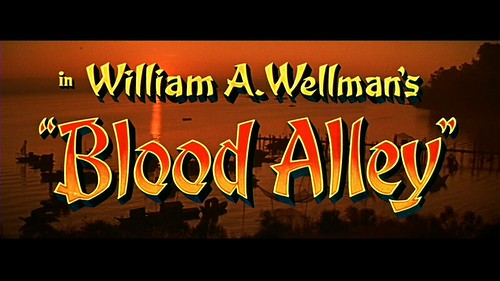
Maltin’s Movie Guide: The End of an Era
9 Sep
I’ve had a copy of Leonard Maltin’s Movie Guide (or TV Movies as it was originally called or Movie and Video Guide as it was later called) by my TV set since sometime in the early 1970s when I got the very first edition, published in 1969, as a bonus from some movie book-of-the-month club. Maltin was already well known among film students and buffs at the time for the magazine Film Fan Monthly and assorted film books that he’d already had published by his early 20s, including the very first book I bought from that book-of-the-month club, The Disney Films (1973), which offered an in-depth survey of feature films produced by the Walt Disney Studio from 1937 to 1973. He would add more incredibly useful film books to his accomplishments in the years that followed, including Of Mice and Magic: A History of American Animated Cartoons, The Great Movie Shorts and The Great Movie Comedians. Once they started publishing the Guide regularly, I would get a new edition every year and give the older one away. It was useful to have a handy guide where you could find cast members, running time, year of release, director, brief description and critical overview from a trusted source. This was at a time when you had to rely on TV Guide’s movie listings and various newspapers’ TV pages for whatever info was available on each film being shown on TV. Those listings were often provided by reviewers with absolutely no appreciation for the genre films my friends and I loved so much. I can’t recall offhand the scathing dismissals these films got, but they were pretty infuriating. Actually, I remember one. For the film, FROM HELL IT CAME (1957), the New York Times listing simply said, “Back send it.”





